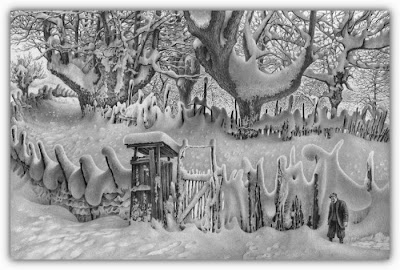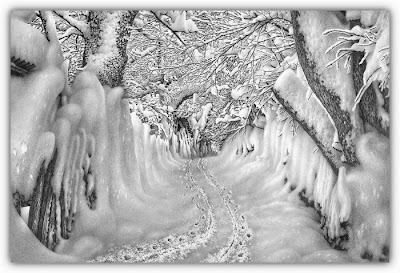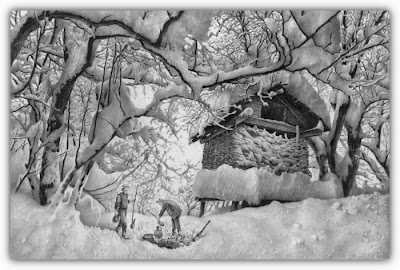Today is the anniversary of one of the greatest photographs of World War II being taken — and of a defining moment in British history. On the night of December 29, 1940, Daily Mail chief photographer Herbert Mason was firewatching on the roof of the newspaper’s offices between Fleet Street and the Thames.
The Luftwaffe’s blitz on London was at its height: after a brief pause decreed by Hitler on Christmas Day, Goering’s bombers had resumed their almost nightly pounding of the capital. A brief attack on December 27 inflicted 600 casualties, more than 50 of them in a single public shelter in Southwark which received a direct hit.
 Symbol in the smoke: Herbert Mason's iconic photograph of St Paul's dome emerging from the smoke of raging fires in surrounding streets was taken 70 years ago this week
Symbol in the smoke: Herbert Mason's iconic photograph of St Paul's dome emerging from the smoke of raging fires in surrounding streets was taken 70 years ago this weekWhen darkness fell on December 29, the Heinkel and Dornier planes came again to launch their 125th attack since the campaign began — which inflicted unparalleled devastation on the old City of London. Barely 30 minutes into the raid, Luftwaffe aircrew counted 54 major fires beneath them; in three hours of early evening bombing, 120 tons of explosive and 22,000 incendiaries fell, inflicting appalling damage.
 Capturing history: Daily Mail chief photographer Herbert Mason took the photograph from the roof of the newspaper's office in Carmelite Street
Capturing history: Daily Mail chief photographer Herbert Mason took the photograph from the roof of the newspaper's office in Carmelite StreetHundreds of buildings in the heart of the financial district were set ablaze; eight Christopher Wren churches were destroyed and the 15th-century Guildhall was set on fire. One bomb landed near the Monument, erected by Wren to commemorate the 1666 Great Fire of London.
A middle-aged spinster named Vere Hodgson, who worked in a charity shop in Notting Hill, kept a wonderful diary of the war years, especially of the Blitz. ‘Terrible fires in London,’ she wrote of that night. ‘We went up on the roof to look. At Shepherd’s Bush, flames were leaping, and towards the City they were gigantic. As I walked up the road I could see the smoke.
‘A great red glow filled the sky — I had no need of a torch — I could see every step I took and could have read a book if I had wished.
‘The police said it was Waterloo station, but a taxi man told my friend Miss Mowes that the City was on fire, and they were trying to save St Paul’s. These were her first words to me, and I shall never forget the horror of them.’
On the roof of the Mail’s office at Northcliffe House, Carmelite Street, Herbert Mason gazed on the inferno around the cathedral, less than half a mile from where he stood — and raised his camera.
‘I focused at intervals as the great dome loomed up through the smoke,’ he later said. ‘The glare of many fires and sweeping clouds of smoke kept hiding the shape. Then a wind sprang up. Suddenly, the shining cross, dome and towers stood out like a symbol in the inferno. The scene was unbelievable. In that moment or two, I released my shutter.’
Mason knew nothing of the extraordinary drama taking place in St Paul’s, even as he took the picture that became the transcendent image of the Blitz.
 Devastation: This was the view from St Paul's on January 3, 1941, showing the destruction to the streets surrounding the Cathedral
Devastation: This was the view from St Paul's on January 3, 1941, showing the destruction to the streets surrounding the CathedralFalling rubble had blocked emergency services from getting through the streets and an abnormally low tide in the Thames caused hydrants on which firemen’s pumps depended to run dry. When a fire broke out in the cathedral’s library aisle, there was no mains water to fight it — the blaze was eventually suppressed with stirrup pumps, buckets and sand.
 The War's greatest picture: The Daily Mail of 31 December 1940 sums up Herbert Mason's picture in perfect style.
The War's greatest picture: The Daily Mail of 31 December 1940 sums up Herbert Mason's picture in perfect style.Then, soon after 6.30pm, an incendiary bomb — one of 29 to fall on and around St Paul’s that night — pierced the lead roof of the dome and lodged in its timbers. Molten lead began to drip into the nave below. The aged wood of the choir stalls and organ screen, carved by the great sculptor Grinling Gibbons, was at mortal risk, while smoke from the blazing buildings surrounding the cathedral enveloped it.
American reporter Ed Murrow pronounced the great building’s obituary in a live broadcast to the U.S.: ‘The church that means most to London is gone. St Paul’s Cathedral is burning to the ground as I talk to you now.’
His valediction was premature: as he spoke, two teams of specialist fire watchers recruited from the Royal Institute of British Architects — and hand-picked because they had heads for heights — were crawling along the wooden beams with hand pumps to reach the blazing section.
But suddenly the incendiary bomb, having burnt through the wood, fell far, far to the nave below, where it was easily put out. Though almost every building around St Paul’s perished, the cathedral survived.
More than 160 people died in that night’s raid, including 16 firemen, and 500 were injured.
Eight of the firemen perished in a single incident when a wall collapsed on them as they fought a blaze near Fleet Street and 250 of their comrades suffered injuries during the night.
The next morning, it was bitterly cold. There was a light scattering of snow as office worker Dorothy Barton emerged from London Bridge station on her commute.
She gazed in horror at the acres of smoking and still burning ruins —then her heart lifted as she looked up at St Paul’s, towering over the scene. ‘I felt a lump in my throat because, like so many people, I felt that while St Paul’s survived, so would we,’ she said.
 London's burning: Ruins of a building in the shadow of St Paul's still smoulder a week after the Blitz on the city in December 1940
London's burning: Ruins of a building in the shadow of St Paul's still smoulder a week after the Blitz on the city in December 1940But mild, gentle Miss Vere Hodgson looked on the devastation and wrote bitterly: ‘I shall never bother with Germans or foreigners again. It makes you want to give other people a taste of what we have had.’
Herbert Mason’s photograph went unpublished for two days while censors considered whether it would serve Britain’s cause; others — for example, one of Bank underground.










 Elegant appearance on this wedding dress, you will seem beauty when you wearing this dress, if you look the great design from wedding dress, you will interested to choose this dress as the best for your . on the front view you can see a beautiful bread that replaced on the breast and belt, yellow color cross in the middle of dress make life this dress when it wearing and the back also. This beautiful dress offers in US$ 305.00 with color option ivory. Go to the boutique now and bring this dress at home.
Elegant appearance on this wedding dress, you will seem beauty when you wearing this dress, if you look the great design from wedding dress, you will interested to choose this dress as the best for your . on the front view you can see a beautiful bread that replaced on the breast and belt, yellow color cross in the middle of dress make life this dress when it wearing and the back also. This beautiful dress offers in US$ 305.00 with color option ivory. Go to the boutique now and bring this dress at home. Beautiful Strapless pink wedding dress embellished by sequins at top of corset bodice. this beautiful pink wedding dress expanse at lower part floor length skirt. this Mori Lee Bridal wedding gown suitable for wedding standing party. Pink color for wedding dress become popular among young girl today they will choose a wedding dress in pink than white color,why because white as common color for wedding dress.
Beautiful Strapless pink wedding dress embellished by sequins at top of corset bodice. this beautiful pink wedding dress expanse at lower part floor length skirt. this Mori Lee Bridal wedding gown suitable for wedding standing party. Pink color for wedding dress become popular among young girl today they will choose a wedding dress in pink than white color,why because white as common color for wedding dress.





























 In their quest to deliver a message about the environment, this christmas, a team of six students from taiwan’s trans world university have created a unique christmas tree out of 80,000 plastic spoons. The young environmentalists entered a competition for the best christmas tree made of recyclable materials, and their original idea came up on top.
In their quest to deliver a message about the environment, this christmas, a team of six students from taiwan’s trans world university have created a unique christmas tree out of 80,000 plastic spoons. The young environmentalists entered a competition for the best christmas tree made of recyclable materials, and their original idea came up on top. The 80,000 plastic spoons used in the making of the tree were provided by the taiwanese branch of kfc, who was probably looking for a way of improving its overall image. After the holiday season, the spoons will be taken to a recycling facility and used to create something useful. Impressed by the feat of these young students, mayor jason hu felt the need to send an environmental message of his own: “christmas must be celebrated in an Eco-friendly way, and it is the same when we choose clothing or when we take a shower.”
The 80,000 plastic spoons used in the making of the tree were provided by the taiwanese branch of kfc, who was probably looking for a way of improving its overall image. After the holiday season, the spoons will be taken to a recycling facility and used to create something useful. Impressed by the feat of these young students, mayor jason hu felt the need to send an environmental message of his own: “christmas must be celebrated in an Eco-friendly way, and it is the same when we choose clothing or when we take a shower.”